The revolver is not dead, but it has lost ground to micro-compact semiautomatics. The ubiquitous 4-inch-barreled sixgun — once the mainstay of American law enforcement — has all but disappeared from duty holsters, as well. For nearly 100 years, Smith & Wesson dominated the duty-revolver market, but it successfully transitioned to become a significant brand in the making of semiautomatic pistols. However, Smith & Wesson did not abandon the revolver business, and one segment that is experiencing a resurgence in public interest for small-frame models.
The J-frame was introduced in 1950 as the Chief’s Special, and these have remained in production ever since. Not everyone is interested in owning or carrying a double-stack 9mm with a red dot and light attached. Some people simply want to slip a gun into a pocket holster or purse and go about their day. For that role, the J-frame is ideal.
The J-frame evolved from the I-frame, introduced in 1896, which could accommodate .22 LR, .32 and .38 S&W cartridges but not the more powerful .38 S&W Special. The first 20,000 to 30,000 J-frames were modified I-frames, according to Michael Helms of the Smith & Wesson Historical Foundation. The J-frame became the standard for compact revolvers in the Smith & Wesson catalog, replacing the I-frame. The Chief’s Special, later known as the “Model 36,” was a double-action, five-shot .38 S&W Special with a 2- or 3-inch barrel. Initially released with a round-butt frame, square-butt examples emerged within 2 years. An aluminum J-frame known as the “Chief’s Special Airweight,” later as the “Model 37,” followed in 1951. Seemingly overnight, the J-frame revolver became the most capable concealable firearm of the era, and it remains a credible self-defense option decades later.
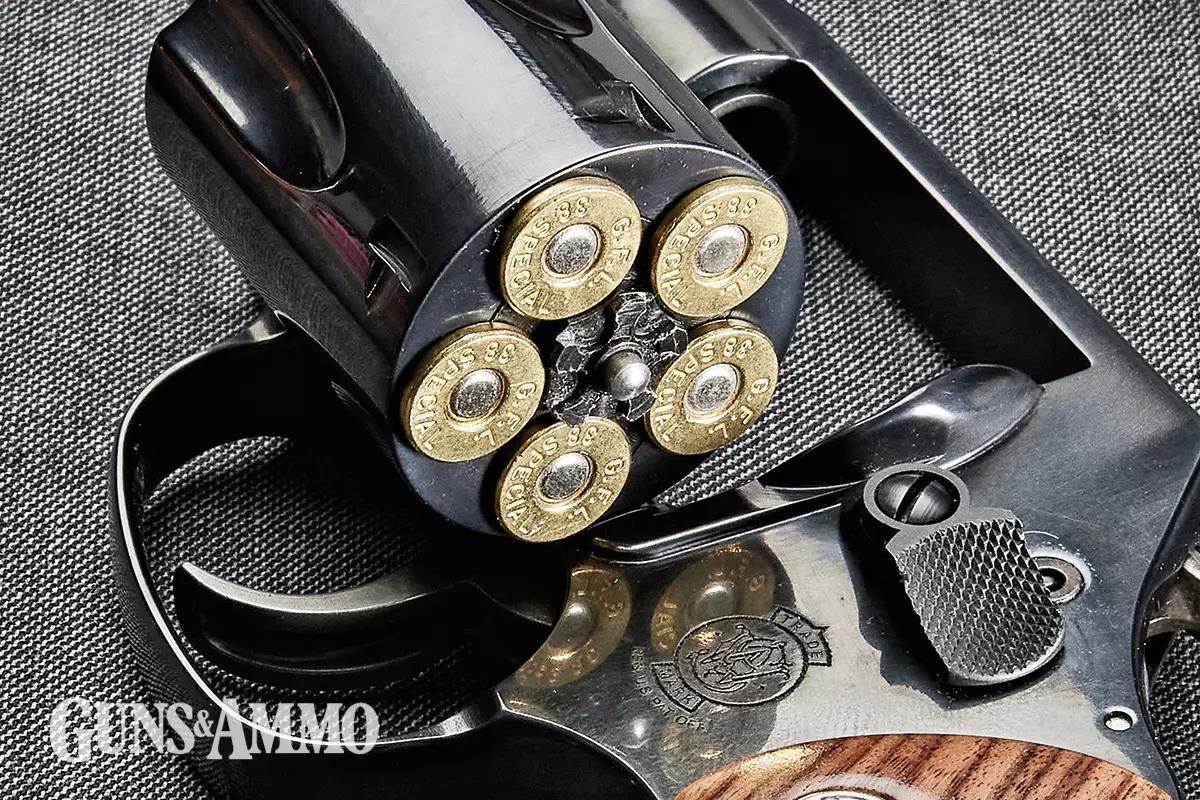
J-frame revolvers were produced in many configurations through the years. In various forms, they have been carried as backup guns for law enforcement officers, primary defensive firearms among those who concealed carry, and general options by recreational shooters. The U.S. Air Force even issued aluminum-framed J-frame revolvers to its aircrews, as well as the more common K-frame M13 Aircrewman handguns. Reliable sources have indicated that a significant number of J-frame guns were used by the Central Intelligence Agency, also. In all, between 5 and 6 million J-frames have been produced, according to Helms.
Advertisement
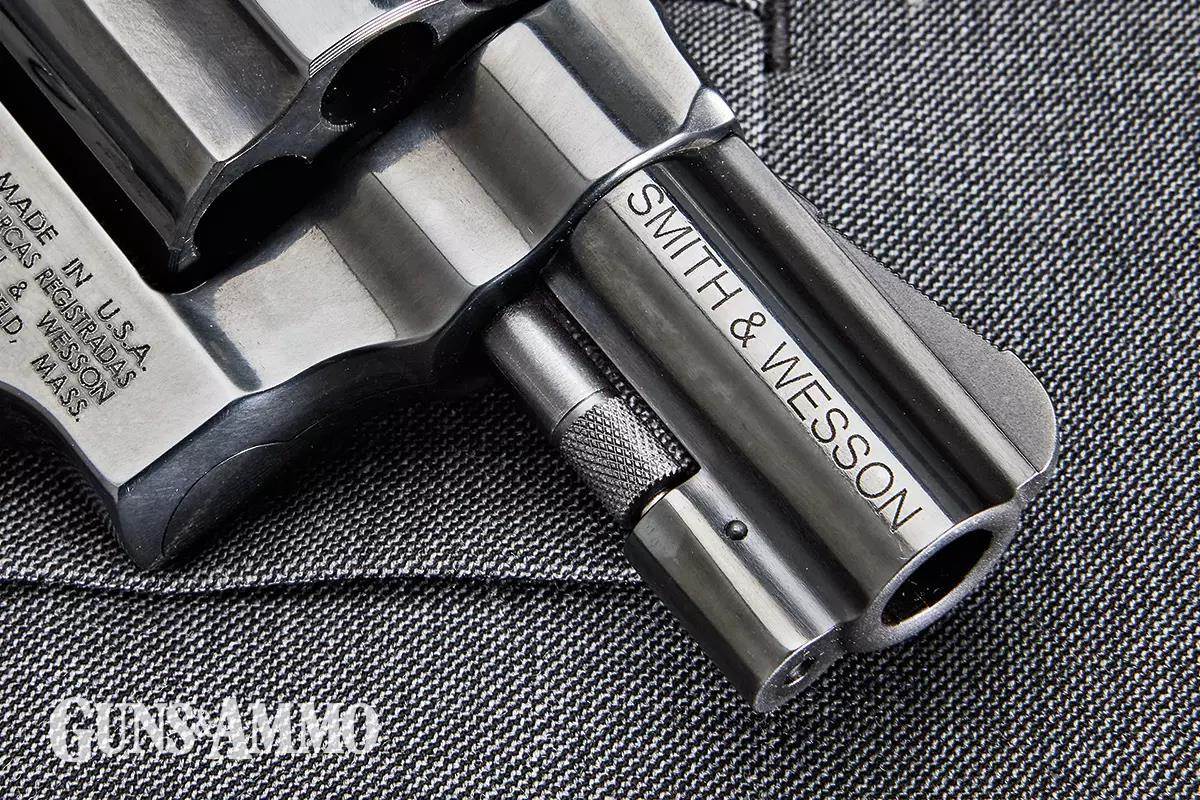
Today, Smith & Wesson’s website lists 38 different J-frame variations, ranging in chambering, configuration, and price. J-frames are available in eight-shot .22 LR, .22 Magnum; five-shot .38 S&W Special, and .357 Magnum; as well as a six-shot .32 H&R Magnum on a limited distributor-exclusive program. Weights range from the 11.7-ounce Model 340 PD to the 22.9-ounce Model 60. Suggested retail pricing ranges from $449 to $1,149.
Exposed, shrouded, and enclosed hammer versions are all offered. There are J-frames equipped with Crimson Trace Lasergrips, and Model 60/642 Ladysmith models were designed specifically for female users. An enhanced Ultimate Carry series is sold through Lipsey’s, a firearms distributor known to dealers. The Ultimate Carry guns, equipped with XS Sights, VZ Grips, and an enhanced double-action-only (DAO) trigger bring the total number of available J-frame models up to 42! The J-frame offers the most diverse product lineup in the entire Smith & Wesson catalog.
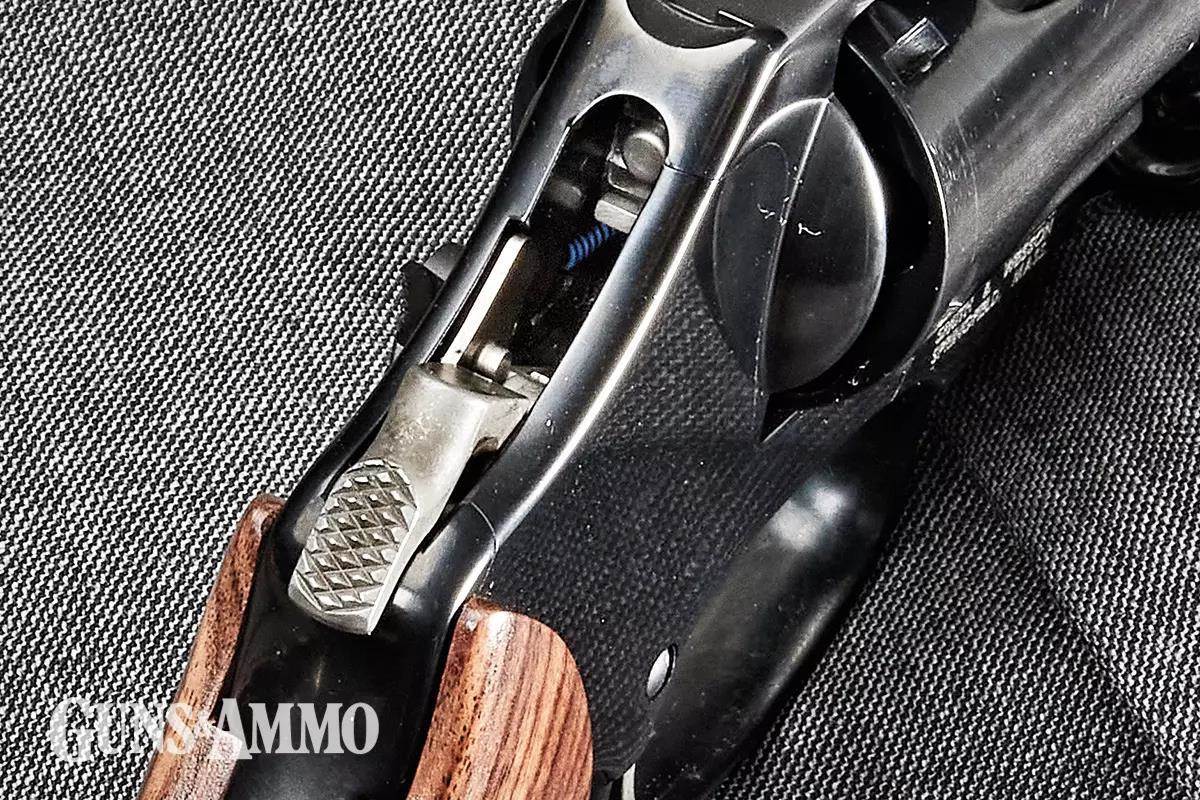
For collectors, the Model 36 Classic is a near-clone of the Chief’s Special. For the outdoorsman, there’s the handy Model 317 Kit Gun chambered in .22 LR. The ultimate in power-to-weight ratio is the Model 360 PD chambered in .357 Magnum. This AirLite revolver combines a Scandium-alloy frame with a titanium cylinder and stainless-steel barrel, which harnesses magnum performance in an 11.8-ounce package.
Advertisement
There are fixed ramp sight models, adjustable sight variants, and models with exotic hardwood stocks or a utilitarian polymer handle. There’s even a J-frame available with a pink grip; there is a J-frame for just about everyone.
With so many options, I decided to compare J-frame revolvers from opposite ends of the spectrum in terms of features and price: The M&P Bodyguard 38 is a no-frills, budget-minded option that only shoots .38 Special. The comparator is the Performance Center Pro Series Model 60 in .357 Magnum. As a control, I included an original 1963-vintage Model 36, which has a used “Blue Book” value of about $550, about $300 less than the current-production Model 36 Classic.
How did the value-priced M&P Bodyguard 38 compare against the Performance Center Model 60 that costs twice as much?
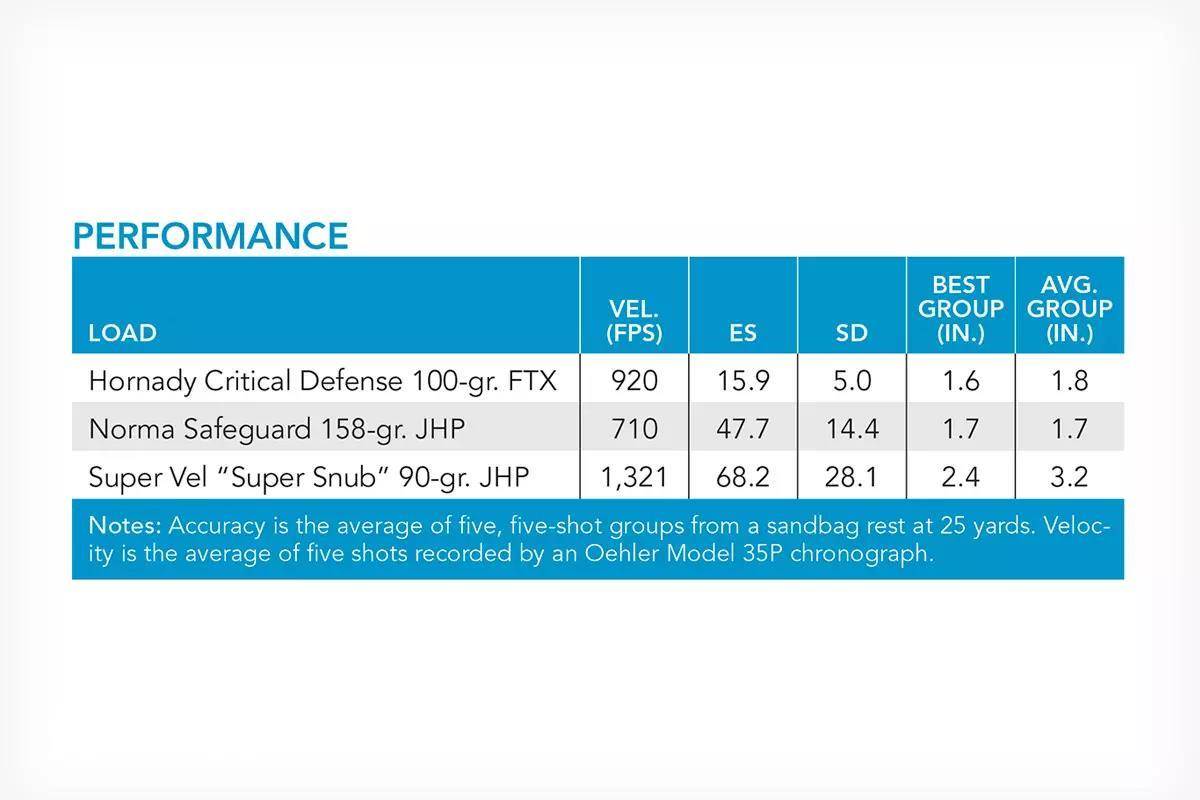
M&P Bodyguard 38
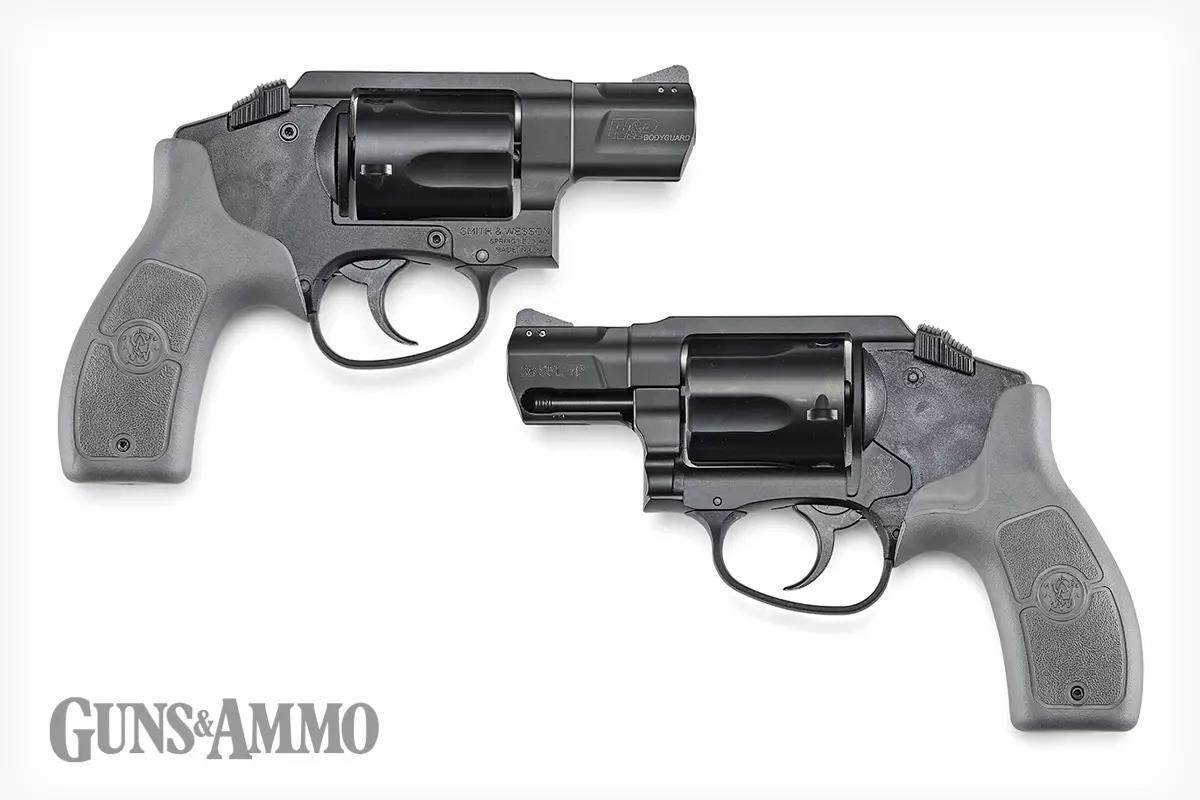
Developed to be lightweight and reasonably priced, the M&P Bodyguard 38 is built on an aluminum-alloy upper frame paired with polymer side plates that form the grip. It weighs only 14.2 ounces unloaded, making it ideal for concealed carry. The 1.875-inch barrel is made from stainless steel, as is the five-shot cylinder. Both are PVD-coated satin black. The barrel is a two-piece system with an internal tube and an outer shroud. Though this model features composite arrangements, Pistolsmith Hamilton Bowen told me that they are “technically superior to the traditional one-piece forging.”
Unlike any other revolver I’ve seen, the M&P Bodyguard 38’s cylinder is supported under spring pressure from inside the frame, which creates a barrel-to-cylinder gap of less than 0.001 inch unless manually pulled to the rear. The cylinder yoke locks into the frame by way of a spring-loaded detent ball. Instead of the cylinder release being located in the traditional position on the left side of the frame, it is a sliding polymer button that rides where a hammer typically rests. It is intuitive and fast to use.
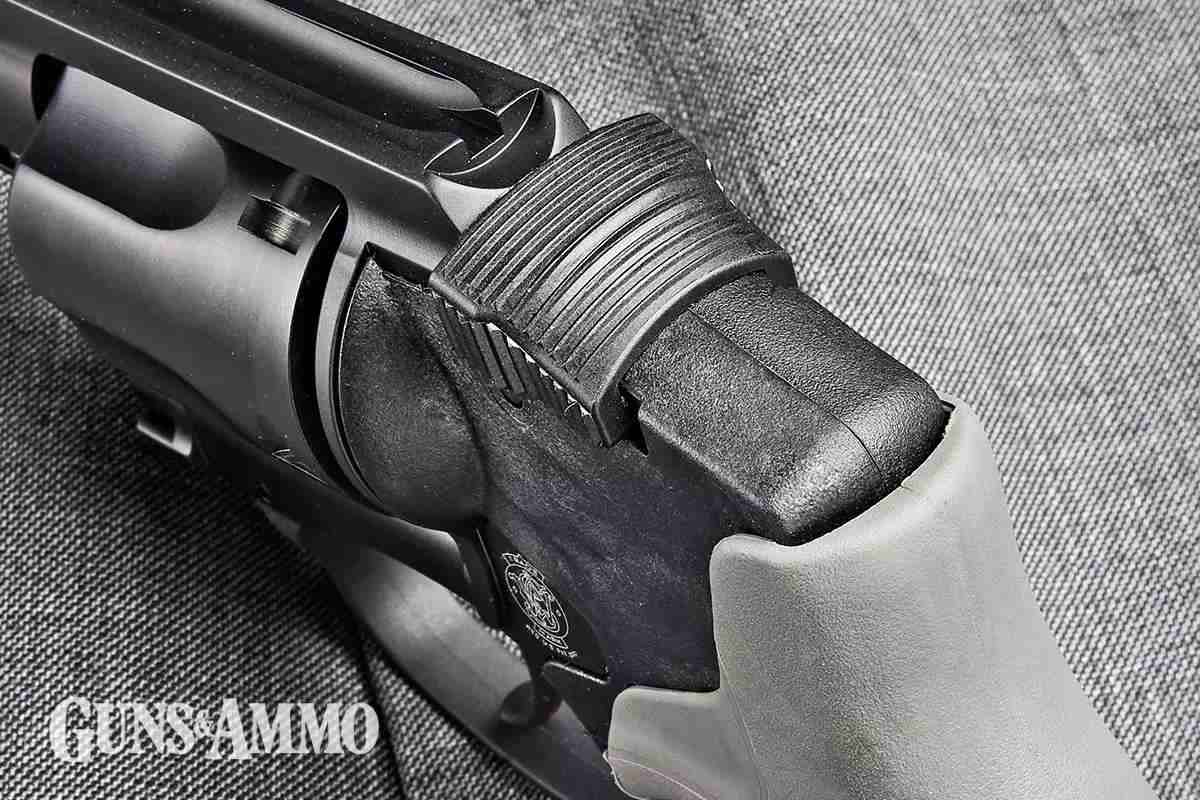
The hammer is enclosed, making the Bodyguard a double-action-only (DAO) revolver. It’s worth noting that, historically, Bodyguard models used a shrouded rather than an enclosed internal hammer. Enclosed hammer guns were often referred to as a “Centennial.” The “Bodyguard” name must have been too good to pass up for a handgun intended for self-defense.
The triggerpull on Guns & Ammo’s test sample was long but relatively smooth, releasing the hammer after just 10 pounds. The trigger allowed for “stacking,” which was helpful when shooting groups from the bench during accuracy testing.
The Bodyguard’s sights are fixed, combining a pinned and serrated ramp at the front with a rear groove making a notch machined into the frame’s topstrap. Though the sights are utilitarian, they are superior to those on my vintage Model 36 in terms of visibility.
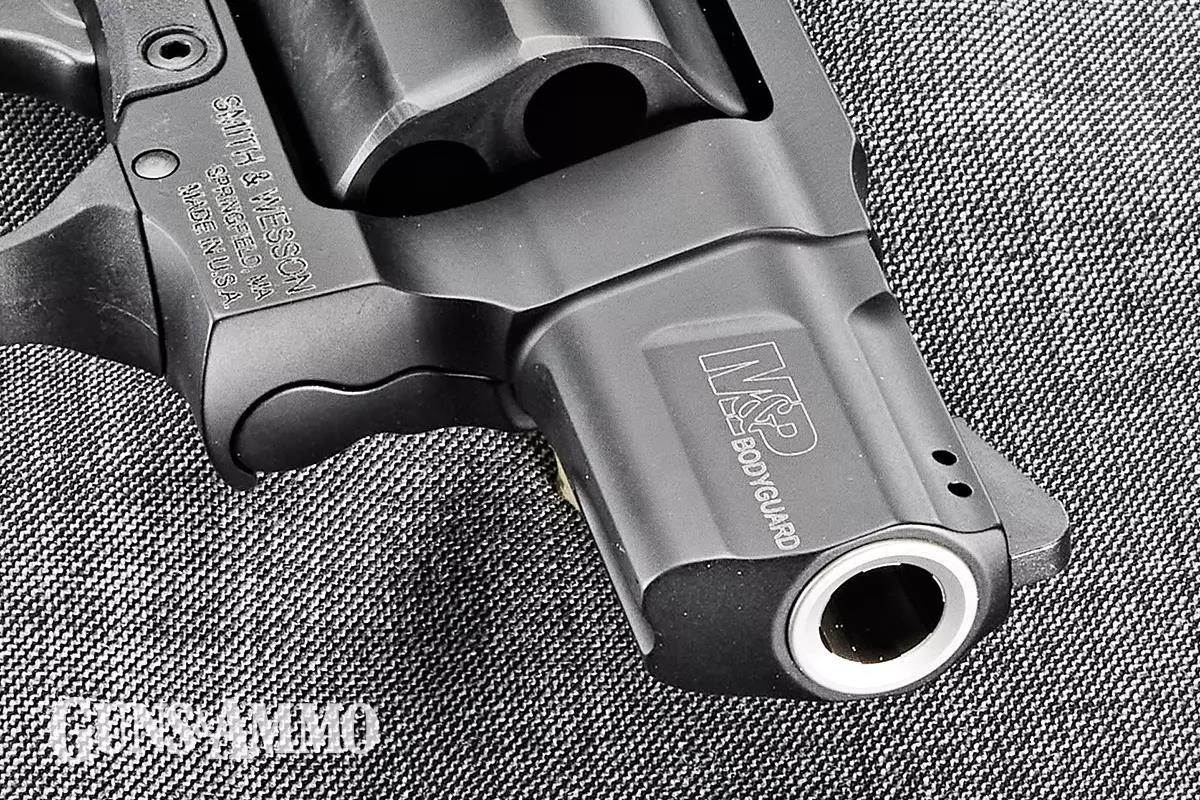
Each revolver from the bench with three different loads to establish the mechanical accuracy potential. The requirement that the Bodyguard had to be shot double-action was a disadvantage from the shooter’s perspective, but effect results were not what one might assume in terms of group size.
The M&P Bodyguard 38 is a defensive tool. It has useful sights, a decent trigger, and exhibits surprisingly good accuracy. I carried it appendix-style in a Crossbreed Holsters Freedom Carry holster, and I didn’t feel under-gunned. If you’re looking for a simple revolver to carry, it would be hard to go wrong with this one, especially for less than $500.
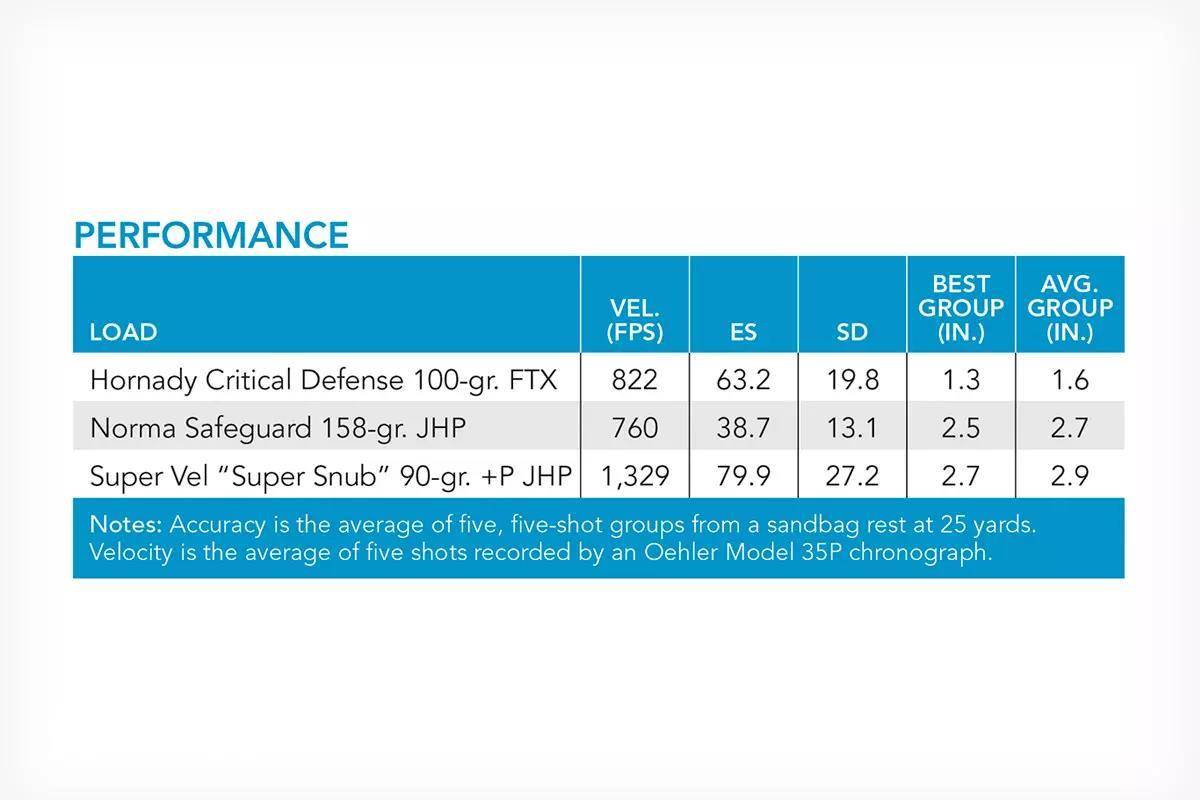
Performance Center Pro Series Model 60
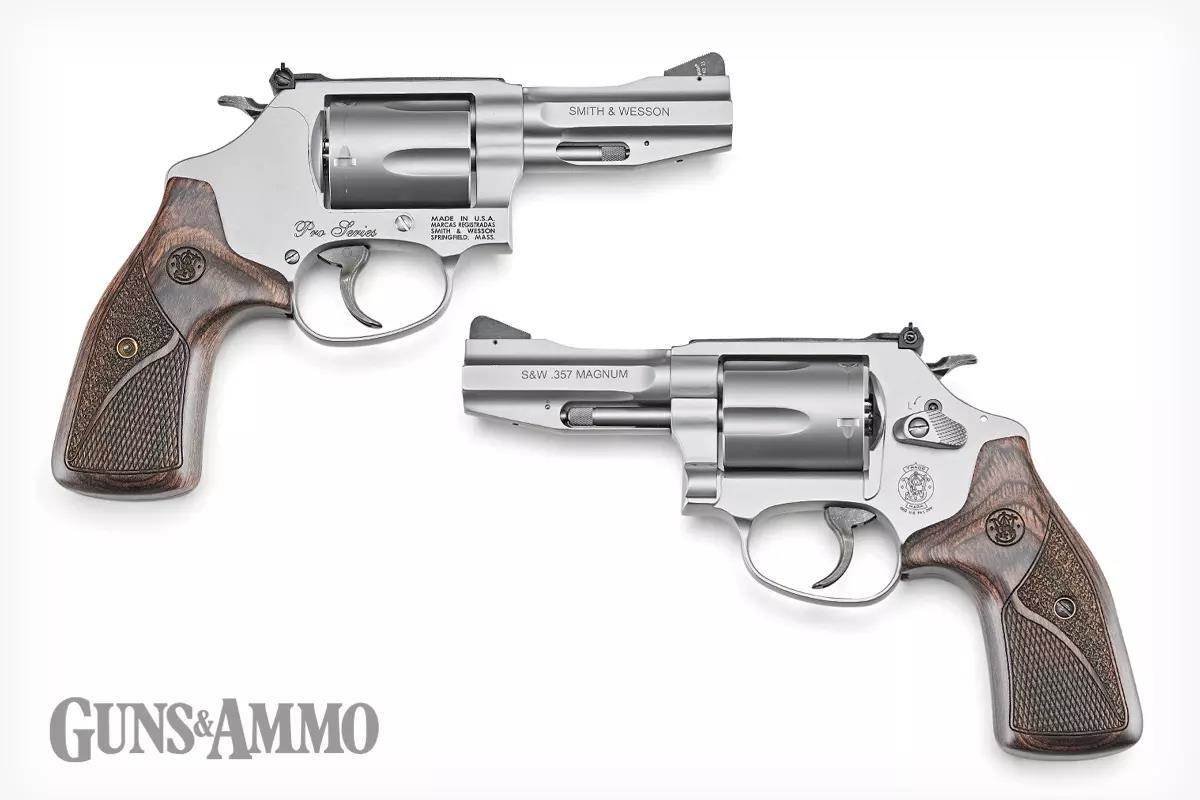
Launched in 1965, the Model 60 was the world’s first revolver built from stainless steel. However, the Model 60 was otherwise a Chief’s Special. The Model 60 has remained in production since released. Today, it is chambered in .357 Magnum. G&A tested the Performance Center Pro Series Model 60, a high-end J-frame.
To use legacy Smith & Wesson parlance, the Pro Series is the “Model 60 Target.” The Pro Series has a 3-inch stainless-steel barrel with a tapered, partial underlug and machined flats on both sides. The sights are adjustable; a pinned, serrated ramp featuring a Trijicon tritium lamp is at the front, and a black, adjustable rear sight can be tuned for windage and elevation. Windage adjustments have positive clicks, but the elevation screw does not. The adjustable sights were an advantage during accuracy testing since the loads used varied in bullet weight and velocity.

The Pro Series has a smooth-faced trigger and a narrow, checkered hammer. The double-action triggerpull was smooth with a bit of creep after the stack. The single-action pull was short and crisp, letting go of the hammer after 3 pounds, 2 ounces. The handgun is equipped with an internal lock that can be used to render the action inoperable with a key. The cylinder locks into place both at the rear and at the front of the ejector rod. The cylinder gap on G&A’s test sample measured .008 inch.
The Pro Series’ frame is a round-butt style, but the two-piece laminated grips fill that gap to create a square-butt profile. The grips were comfortable, allowing me a full-fingered purchase on this little revolver.
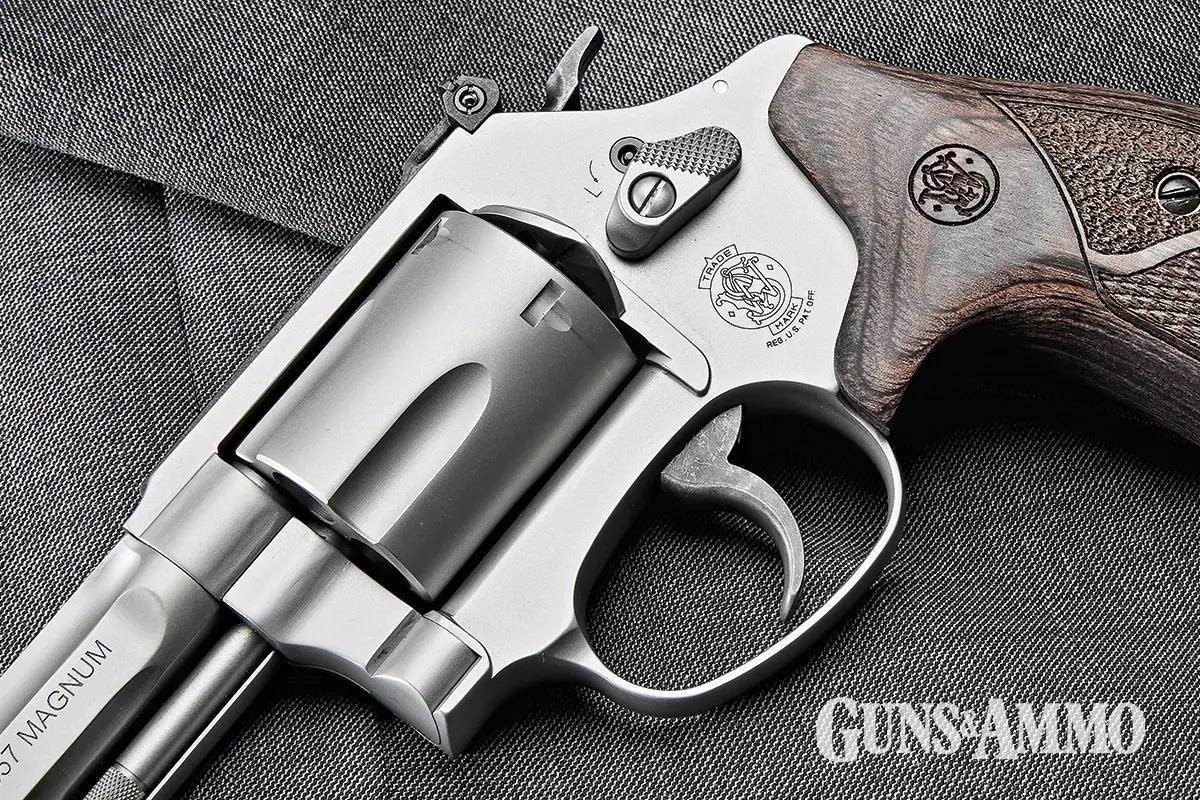
The longer sight radius, upgraded sights, and the option of a single-action trigger pull made the Pro Series easier to shoot accurately than the Bodyguard. In fact, the Pro Series was capable enough to be used for casual target shooting. It would be excellent for self-defense duties, also.
Though the Model 60 is chambered in .357 Magnum, I focused on using .38 Special loads for comparison. One of the advantages of a revolver is the freedom to choose from a variety of loads and bullet styles with little concern for reliability. Mine ranged from Hornady’s mild-recoiling 110-grain FTX Critical Defense load to Super Vel’s spicy Super Snub 90-grain jacketed hollowpoints. To evaluate the real-world shootability of these guns, I performed a simple timed drill. The “Bill Drill” was named after Bill Wilson of Wilson Combat. It involves firing six rounds at a specified target as rapidly as possible. I modified the drill to five shots, given the capacity of J-frames, and placed the 10-by-10-inch target at 7 yards. With a shot timer, I executed the drill twice with each handgun in random order. The times were nearly indistinguishable from one another, the difference between 1.78 seconds for the Model 36 and 1.84 seconds using the Pro Series Model 60, a mere six-tenths of a second.
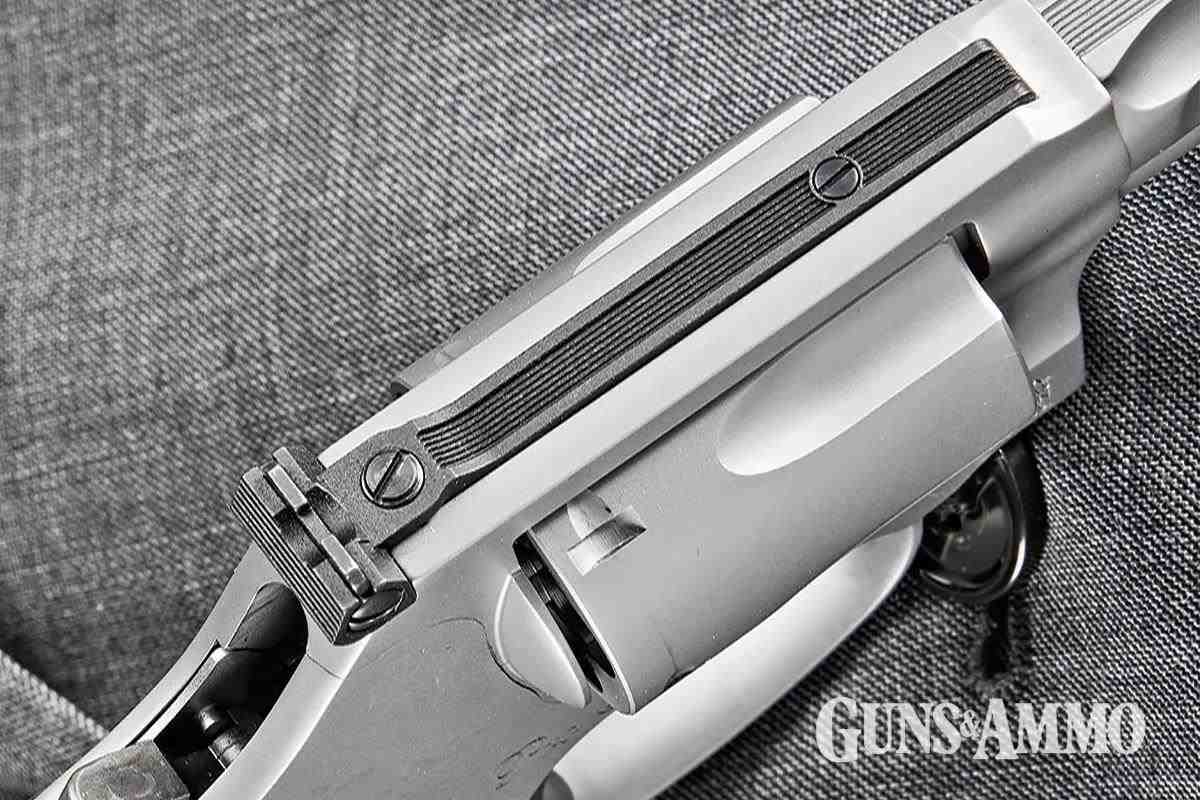
From a price-to-performance perspective, I can’t say that the Pro Series is twice as good as the Bodyguard. If I were looking for a self-defense handgun, the Bodyguard would be fine. The features on the Pro Series were nice, though, and it was certainly a more refined product. If I were looking for more of a multi-purpose handgun, the Pro Series would be my choice. However, it would be hard to go wrong with any gun in Smith & Wesson’s J-frame lineup.
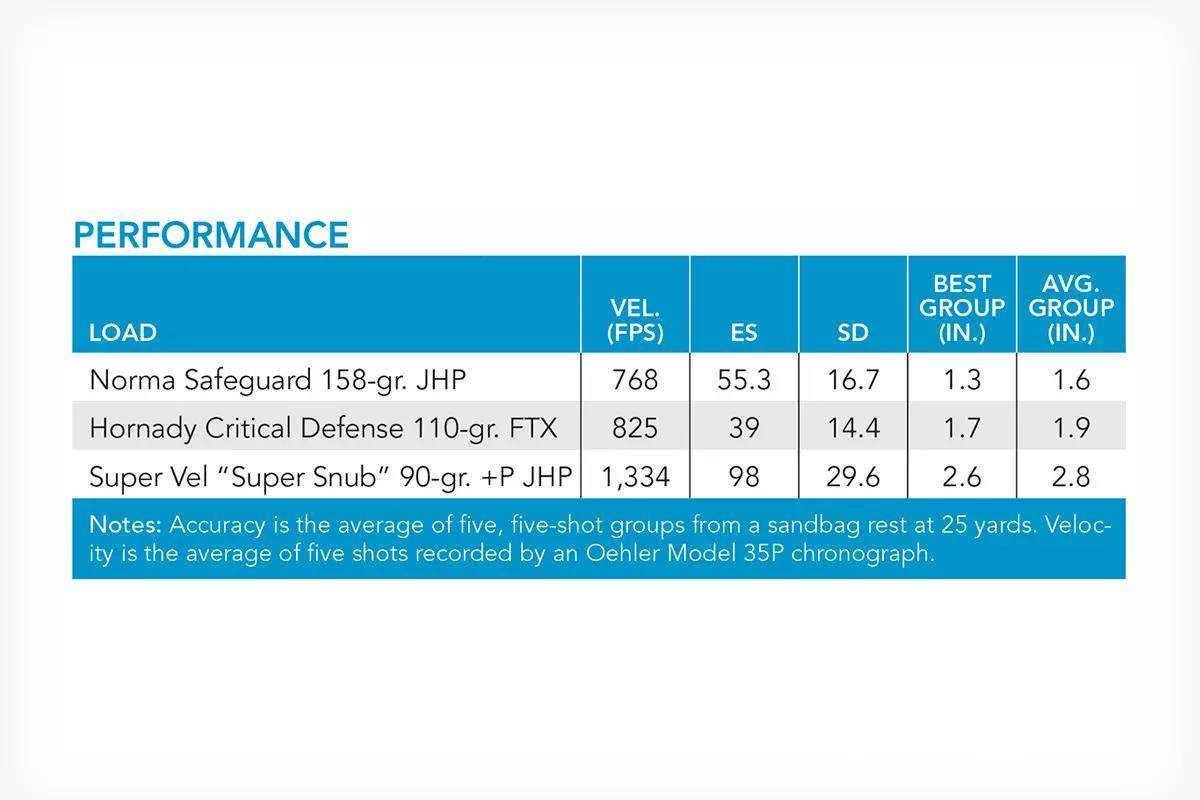
Old vs. New
How do the modern J-frames compare to the Classic? The trigger pull on my old Chief’s Special was a bit slicker, and its finish was more impressive. Admittedly, the sights of the old are inferior. Performance-wise, G&A’s two modern J-frames were every bit as good as my vintage Model 36.
Why has the J-frame endured where other revolvers have not? I think it’s practicality. With a revolver, there’s no manual of arms to memorize, feeding is not an issue, and the relatively heavy double-action trigger provides a margin of safety. The J-frames lack of capacity is made up for in simplicity.
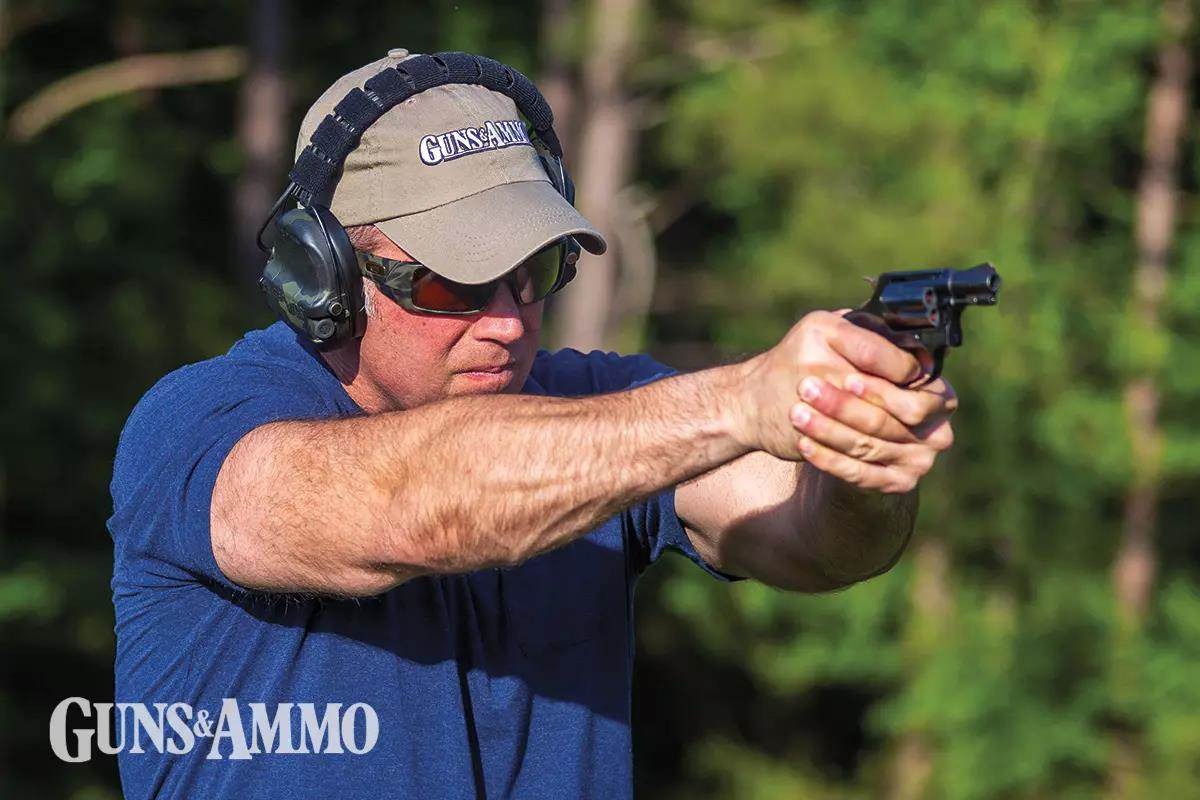
The J-frame is just as relevant today as it was in 1950. Given the widespread legalization of concealed carry during the intervening decades, it is possible that more J-frames are being relied on now than ever before. Even when the revolver market seemed to give way to autos, the J-frame held on. There’s a reason for that.
Smith & Wesson M&P Bodyguard 38 Specificiations
- Type: Revolver, double action only (DAO)
- Cartridge: .38 Special
- Capacity: 5 rds.
- Barrel: 1.88 in.
- Overall Length: 6.6 in.
- Width: 1.36 in.
- Height: 4.4 in.
- Weight: 14.2 oz.
- Finish: Black PVD
- Grip: Polymer, grey
- Sights: Fixed, ramp (front), groove
- Trigger: 9 lbs., 8 oz. (tested)
- MSRP: $449
- Manufacturer: Smith & Wesson, 800-331-0852, smith-wesson.com
Smith & Wesson Performance Center Model 60 Pro Series Specifications
- Type: Double-action revolver
- Cartridge: .357 Magnum/.38 Speciall
- Capacity: 5 rds.
- Barrel: 3 in.
- Overall Length: 8.7 in.
- Width: 1.3 in.
- Height: 4.3 in.
- Weight: 1 lbs., 6.9 oz.
- Finish: Satin (stainless steel)
- Grip: Laminated wood panels
- Sights: Serrated ramp (front) with tritium dot; adj. notch (rear)
- Trigger: 11.3 lbs./3.15 lbs. (DA/SA)
- MSRP: $909
- Manufacturer: Smith & Wesson, 800-331-0852, smith-wesson.com
Smith & Wesson Model 36 Classic Specificiations
- Type: Double-action revolver
- Cartridge: .38 Special
- Capacity: 5 rds.
- Barrel: 1.88 in.
- Overall Length: 6.94 in.
- Width: 1.3 in.
- Height: 4.3 in.
- Weight: 1 lbs., 3.64 oz.
- Finish: Blued (carbon steel)
- Grip: Checkered wood panels
- Sights: Fixed ramp (front)
- Trigger: 9.9 lbs./2.9 lbs. (DA/SA)
- MSRP: $859
- Manufacturer: Smith & Wesson, 800-331-0852, smith-wesson.com
Read the full article here


